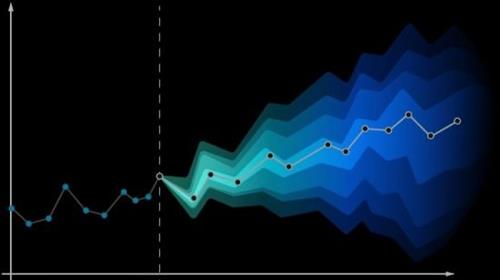- Thread Starter
- #1
Traffic Forecasting with Python: LSTM & Graph Neural Network

Python-driven traffic forecasting with Keras: LSTM and Graph Convolutional Networks for spatiotemporal data modeling
What you'll learn
Understand and analyze real-world traffic data using Python.
Implement and apply Graph Convolutional Networks (GCNs) for traffic data.
Combine LSTM networks with GCNs for time series forecasting.
Preprocess and normalize large datasets for machine learning.
Build, train, and evaluate predictive models using TensorFlow and Keras.
Visualize and interpret model results for traffic prediction.
Requirements
Basic proficiency in Python programming.
Access to a computer with an internet connection for coding and data analysis.
Description
This course offers an in-depth journey into the world of advanced time series forecasting, specifically tailored for traffic data analysis using Python. Throughout the course, learners will engage with the PeMSD7 dataset, a real-world traffic speed dataset, to develop predictive models that can forecast traffic conditions with high accuracy. The course focuses on integrating Long Short-Term Memory (LSTM) networks with Graph Convolutional Networks (GCNs), enabling learners to understand and apply cutting-edge techniques in spatiotemporal data analysis.Key topics include data preprocessing, feature engineering, model building, and evaluation, with hands-on coding in Python to solidify understanding. Learners will also gain practical experience in using popular libraries such as TensorFlow and Keras for deep learning applications.This course is ideal for those looking to advance their careers in data science, machine learning, or AI-driven industries. The practical skills acquired will be highly valuable for roles in smart city planning, transportation analysis, and any field that relies on predictive modeling. By the end of the course, learners will not only have a strong grasp of advanced forecasting techniques but will also be well-prepared for job opportunities in data science and related fields, where they can contribute to innovative solutions in traffic management and urban development.
Who this course is for
Data scientists and machine learning engineers interested in time series forecasting.
Python programmers looking to enhance their skills in deep learning and graph-based models.
Researchers and students in the fields of transportation, urban planning, or smart cities.
Professionals working with traffic data or other spatiotemporal datasets.
AI enthusiasts seeking to understand and implement advanced neural network architectures like LSTM and graph convolutional networks.
Individuals with a background in data analysis who want to apply machine learning to real-world datasets.
Homepage:

Download link
Say "Thank You"
rapidgator.net:
k2s.cc:

Published 11/2024
MP4 | Video: h264, 1280x720 | Audio: AAC, 44.1 KHz, 2 Ch
Language: English | Duration: 1h 8m | Size: 244 MB
MP4 | Video: h264, 1280x720 | Audio: AAC, 44.1 KHz, 2 Ch
Language: English | Duration: 1h 8m | Size: 244 MB
Python-driven traffic forecasting with Keras: LSTM and Graph Convolutional Networks for spatiotemporal data modeling
What you'll learn
Understand and analyze real-world traffic data using Python.
Implement and apply Graph Convolutional Networks (GCNs) for traffic data.
Combine LSTM networks with GCNs for time series forecasting.
Preprocess and normalize large datasets for machine learning.
Build, train, and evaluate predictive models using TensorFlow and Keras.
Visualize and interpret model results for traffic prediction.
Requirements
Basic proficiency in Python programming.
Access to a computer with an internet connection for coding and data analysis.
Description
This course offers an in-depth journey into the world of advanced time series forecasting, specifically tailored for traffic data analysis using Python. Throughout the course, learners will engage with the PeMSD7 dataset, a real-world traffic speed dataset, to develop predictive models that can forecast traffic conditions with high accuracy. The course focuses on integrating Long Short-Term Memory (LSTM) networks with Graph Convolutional Networks (GCNs), enabling learners to understand and apply cutting-edge techniques in spatiotemporal data analysis.Key topics include data preprocessing, feature engineering, model building, and evaluation, with hands-on coding in Python to solidify understanding. Learners will also gain practical experience in using popular libraries such as TensorFlow and Keras for deep learning applications.This course is ideal for those looking to advance their careers in data science, machine learning, or AI-driven industries. The practical skills acquired will be highly valuable for roles in smart city planning, transportation analysis, and any field that relies on predictive modeling. By the end of the course, learners will not only have a strong grasp of advanced forecasting techniques but will also be well-prepared for job opportunities in data science and related fields, where they can contribute to innovative solutions in traffic management and urban development.
Who this course is for
Data scientists and machine learning engineers interested in time series forecasting.
Python programmers looking to enhance their skills in deep learning and graph-based models.
Researchers and students in the fields of transportation, urban planning, or smart cities.
Professionals working with traffic data or other spatiotemporal datasets.
AI enthusiasts seeking to understand and implement advanced neural network architectures like LSTM and graph convolutional networks.
Individuals with a background in data analysis who want to apply machine learning to real-world datasets.
Homepage:
Screenshots

Download link
Say "Thank You"
rapidgator.net:
You must reply in thread to view hidden text.
k2s.cc:
You must reply in thread to view hidden text.
